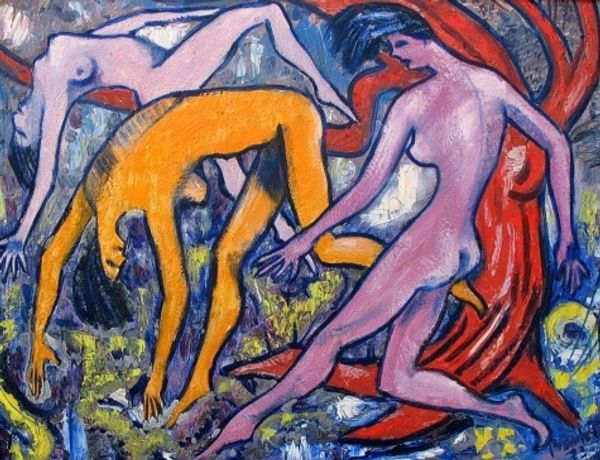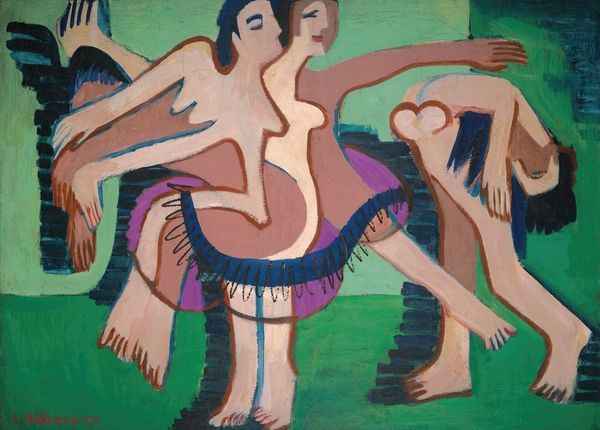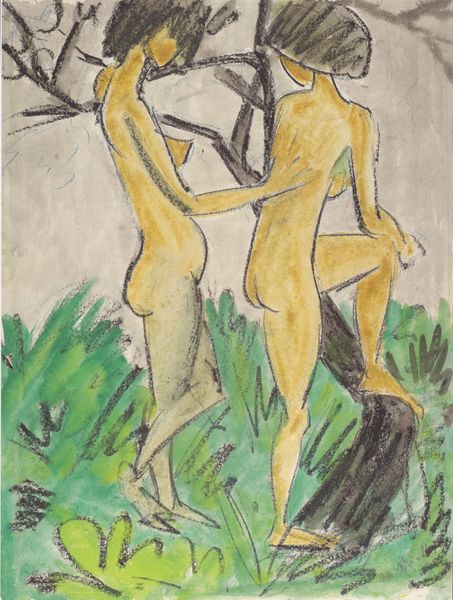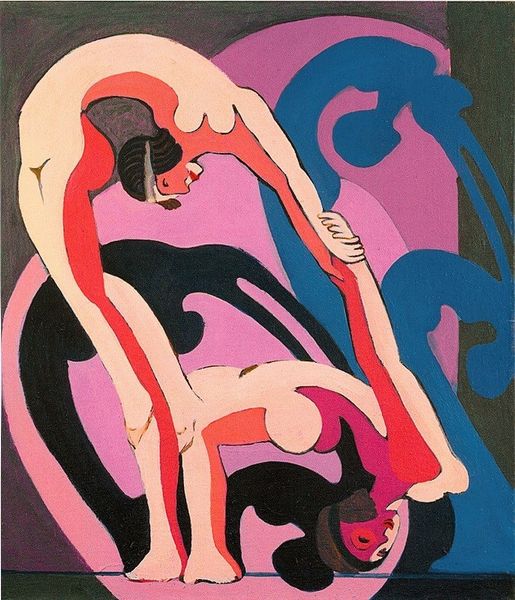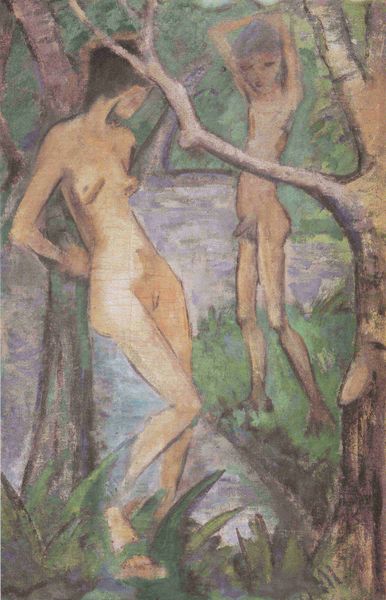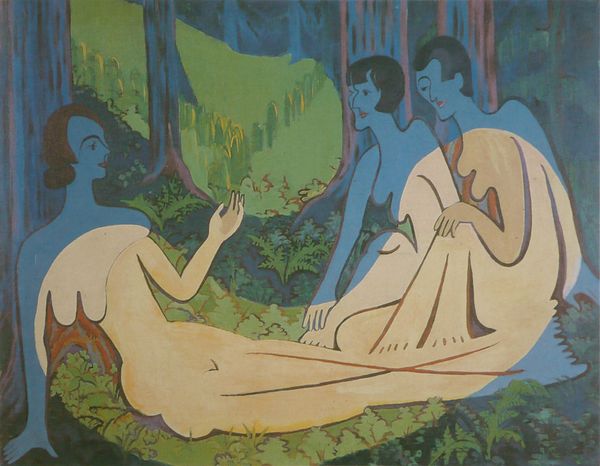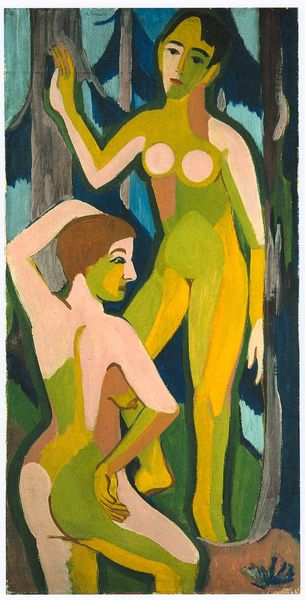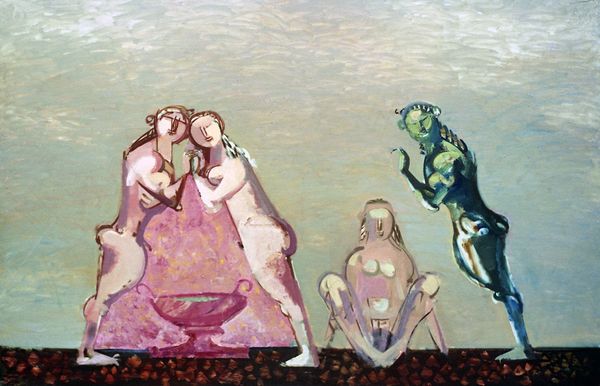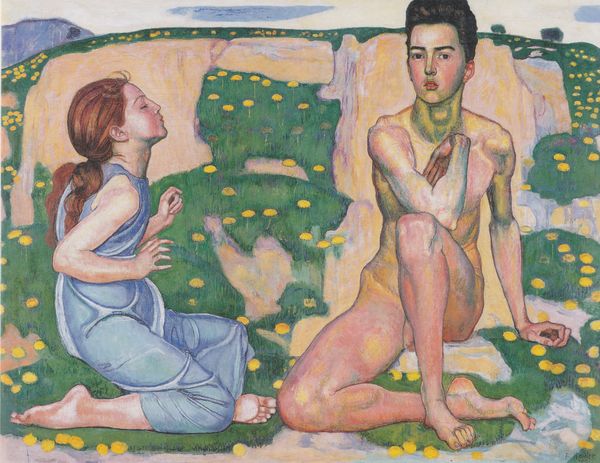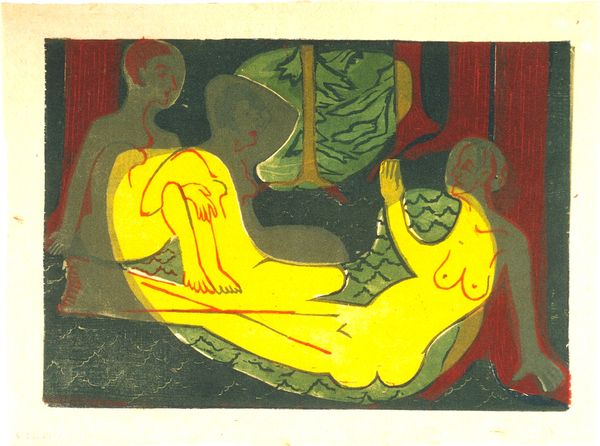
Dimensions: 152 x 89.5 cm
Copyright: Public domain
Curator: Welcome. We are standing before Ernst Ludwig Kirchner’s “Women Playing with a Ball,” painted in 1932. Editor: Well, hello! It strikes me immediately with its disquieting palette; pale, fleshy tones jarring against earthy greens and oranges. Curator: Yes, the composition is fascinating. Notice how Kirchner uses line and color to delineate form, almost fracturing the figures. The use of oil paint lends a particular texture, a kind of visible impasto in sections that adds to the dynamism. It disrupts any sense of classical proportion, really, creating an unsettling but very potent aesthetic. Editor: I see the thick brushstrokes and can almost feel the weight of the paint itself. How interesting, too, that he foregrounds the materiality of the act – we are not invited simply to appreciate beauty. There is something rough and undeniably physical about the work and about what it means to handle paint. We cannot overlook the material's contribution. Do we know where the materials originated from? Curator: Material records are, sadly, hard to come by in the case of Kirchner's oeuvre, but returning to form, the planes intersect strangely, creating ambiguous spaces. Note the raised hands of the lower figure – is it supplication, or is she calling for the ball? This tension is crucial. Editor: Her gesture speaks of need. In my eyes, it reflects a certain desire; a grasping towards fulfillment within this landscape he crafted. Knowing he embraced Expressionism is illuminating. Considering his experiences during the World War, one might infer, despite the apparent ease of play, a subtle commentary about society, longing and unfulfilled dreams, as revealed through paint application and handling. Curator: Exactly. The disjunction inherent in the pictorial space further emphasizes the figures' alienation, a common thread throughout German Expressionism. It makes use of planar composition to signify disarray and reorder meaning. Editor: True, and while the high art context emphasizes artistic genius, the tangible weight of the oil paint itself pulls me towards an appreciation for labor, craft, and context. These components together give us the means through which a picture like this might reveal deep insight. Curator: A vital reminder that formal rigor and historical context enrich each other to let us experience this visual narrative. Editor: Precisely! I appreciate Kirchner all the more now.
Comments
No comments
Be the first to comment and join the conversation on the ultimate creative platform.

